مقدمة
سواء كان مركزًا تجاريًا صاخبًا أو مساحة داخلية هادئة، فإنها تجذب انتباهنا بسحرها الفريد.
ولكن هل فكرت يومًا في الاختلافات بين الأماكن المغلقة والمفتوحة؟ شاشات LED خارجيةستكشف لك هذه المقالة هذا اللغز.
جدول المحتويات
الفرق 1: الاختلاف في بيئة تركيب شاشات LED
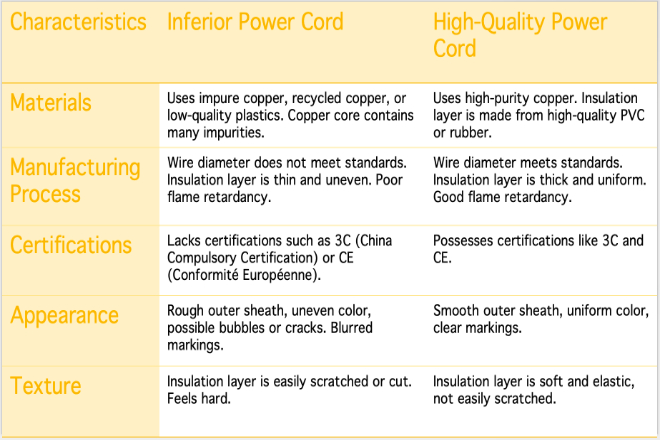
1) متطلبات السطوع
إن الإضاءة المحيطة الداخلية ناعمة نسبيًا، وليست ساطعة مثل ضوء الشمس المباشر في الخارج، لذا شاشة LED داخلية لا تحتاج الشاشة إلى أن تكون ساطعة للغاية، وعادةً ما يكون 300-800 شمعة كافياً.
على سبيل المثال، في مركز التسوق، أو قاعة المؤتمرات، أو الفصل الدراسي، يسمح هذا السطوع للجميع بالرؤية بوضوح دون إيذاء العينين.
إنه أمر مختلف في الهواء الطلق، وخاصة عندما تكون الشمس مشرقة مباشرة أثناء النهار، والضوء قوي بشكل خاص.
إذا لم تكن شاشة العرض ساطعة بدرجة كافية، فلن تتمكن من رؤية المحتوى عليها بوضوح.
لذلك، سطوع تعتبر جودة شاشات LED الخارجية أعلى بكثير، وعادة ما تصل إلى 5000-10000 شمعة أو حتى أعلى.
مثل شاشة الإعلان على جانب الطريق، فقط عندما يكون السطوع مرتفعًا بدرجة كافية يمكن للمارة رؤية محتوى الإعلان بوضوح.
2) متطلبات زاوية الرؤية
شاشات العرض الداخلية مخصصة بشكل أساسي للأشخاص القريبين منهم، ويمكن للجمهور المشاهدة من زوايا مختلفة.
على سبيل المثال، في معرض في القاعة، قد يتجه الأشخاص إلى شاشة العرض.
لذلك، يجب أن تكون زاوية عرض شاشات العرض الداخلية أوسع، بحيث يمكنك رؤية صورة واضحة بغض النظر عن الاتجاه الذي تنظر إليه منه.
شاشات العرض الخارجية مخصصة بشكل أساسي للأشخاص البعيدين لرؤية المحتوى، مثل التواجد في ساحة أو على جانب الطريق.
لأن المسافة بعيدة نسبيا، زاوية الرؤية لا يلزم أن يكون واسعًا جدًا، طالما يمكن رؤيته من الأمام وبزاوية منحرفة قليلاً.
يمكن أن يؤدي هذا أيضًا إلى جعل الصورة أكثر وضوحًا ولن تكون ضبابية بسبب زاوية الرؤية الواسعة.
3) العوامل البيئية الأخرى
- داخلي:
البيئة الداخلية نظيفة نسبيًا، وتحتوي على كمية أقل من الغبار والماء.
ومع ذلك، من أجل منع الحوادث (مثل انسكاب المياه العرضي أو تراكم الغبار)، ستحتوي شاشات العرض الداخلية أيضًا على بعض التصميمات المقاومة للماء والغبار، ولكن المتطلبات ليست عالية جدًا.
بشكل عام، يمكنه منع الغبار وتناثر الماء.
- في الهواء الطلق:
الحياة في الخارج أكثر تعقيدًا، حيث قد تواجه المطر والرياح والغبار المتطاير في كل أنحاء السماء.
لذلك، يجب أن تتمتع شاشات العرض الخارجية بقدرات قوية مقاومة للماء والغبار، وإلا فإنها تكون سهلة الكسر.
على سبيل المثال، على شاطئ البحر أو في الأماكن ذات الرياح القوية والرمال، تكون القدرة على مقاومة الماء والغبار أكثر أهمية.
- داخلي:
درجة الحرارة الداخلية مستقرة نسبيًا، وعادةً ما توجد مكيفات هواء أو سخانات.
لذا فإن شاشة العرض لا داعي للقلق كثيرًا بشأن مشكلات درجة الحرارة طالما أنها قادرة على التكيف مع درجة حرارة الغرفة العادية.
- في الهواء الطلق:
تختلف درجة الحرارة في الخارج بشكل كبير؛ فقد تكون باردة جدًا في الشتاء وحارة جدًا في الصيف.
لذلك، يجب أن تكون شاشات العرض الخارجية قادرة على تحمّل تقلبات درجات الحرارة هذه، وإلا، فمن السهل مواجهة المشاكل.
باختصار، البيئات الداخلية والخارجية مختلفة جدًا، لذلك يجب أيضًا تعديل تصميم شاشات العرض LED وفقًا لهذه الاختلافات، وذلك لضمان قدرتها على العمل بشكل طبيعي في بيئاتها الخاصة.
الفرق 2: خصائص محتوى شاشات العرض LED
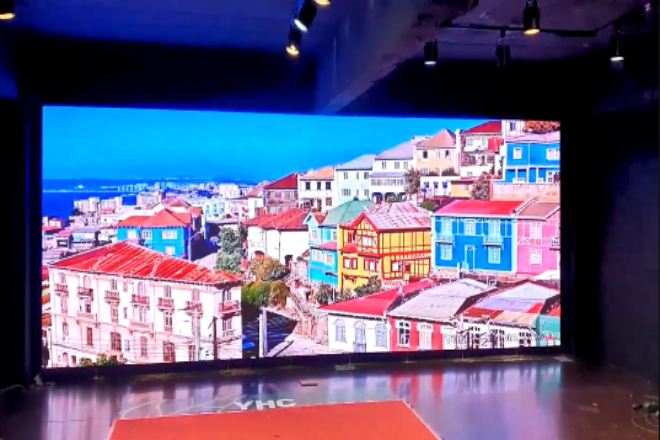
1) محتوى شاشات العرض الداخلية
إن سيناريوهات تطبيق شاشات العرض الداخلية واسعة للغاية، ليس فقط في الشركات ولكن أيضًا في مراكز التسوق.
على سبيل المثال، غالبًا ما تستخدم متاجر العلامات التجارية في مراكز التسوق شاشات LED لعرض المنتجات الجديدة أو تشغيل مقاطع فيديو جذابة أثناء الأنشطة الترويجية.
هناك أيضًا قاعات عرض، حيث يتم عرض الأعمال الفنية أو المنتجات ذات التقنية العالية، ويتم أيضًا استخدام شاشات LED لتقديم خلفية العمل أو وظيفة المنتج.
1.1). ميزات المحتوى:
- غني جدا:
تحتوي شاشات العرض الداخلية على كل شيء، بما في ذلك النصوص والصور ومقاطع الفيديو وحتى المحتوى التفاعلي.
على سبيل المثال، في أحد مراكز التسوق، قد ترى شاشة تعرض صورًا عالية الدقة لحقائب جديدة، مع نص بجوارها يصف المادة التي صنعت منها وسعرها.
أو في صالة العرض، قد ترى شاشة تعرض مقطع فيديو يقدم المنتج، مما يسمح لك بفهمه بشكل أكثر حدسيًا.
- اللون والتفاصيل مهمة:
نظرًا لقرب الجمهور، يجب أن تكون إعادة إنتاج الألوان والتفاصيل جيدة.
تخيل أنه إذا تم عرض صور المجوهرات في مركز للتسوق، وكانت الألوان غير دقيقة، أو كانت التفاصيل غير واضحة، فلن يهتم العملاء بالتأكيد.
لذلك، يجب أن يكون محتوى شاشات العرض الداخلية ملونًا ومفصلاً لجذب الناس.
- معلومات كبيرة ودقيقة:
في كثير من الحالات، تحتاج شاشات العرض الداخلية إلى نقل الكثير من المعلومات التفصيلية.
على سبيل المثال، في الفصل الدراسي، قد يستخدم المعلم شاشة لعرض بعض المخططات المعقدة أو المواد النصية.
في مركز التسوق، يعرض متجر العلامة التجارية المعلمات التفصيلية للمنتج حتى يتمكن العملاء من رؤيته في لمحة.
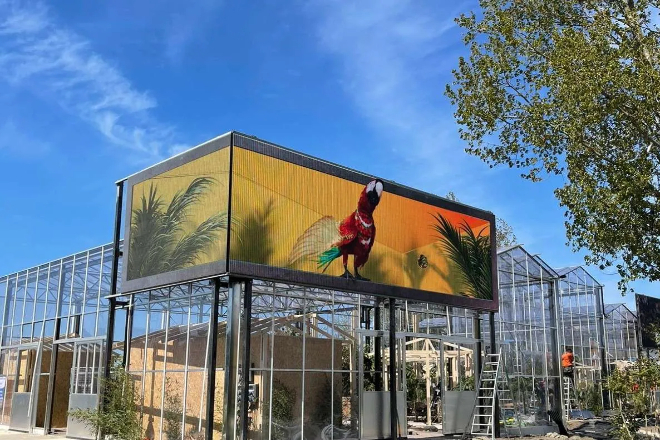
2) محتوى شاشات العرض الخارجية
شاشات العرض الخارجية أكثر اختلافًا. تخيلوا: شاشات الإعلانات على جوانب الطرق أو شاشات العرض الضخمة في الساحات، مهمتها الرئيسية هي جذب انتباه المارة.
لذلك، عليك أن تعمل بجد على تصميم المحتوى.
2.1). ميزات المحتوى:
- شخصيات كبيرة وصور ديناميكية:
عادةً ما يكون محتوى شاشات العرض الخارجية عبارة عن نصوص كبيرة أو صور ديناميكية. ولأن الجمهور بعيد، لا يمكن رؤية الأحرف الصغيرة بوضوح.
على سبيل المثال، عندما تمشي في الشارع، ترى شاشة إعلانية تحتوي على أحرف كبيرة مثل "منتجات جديدة" و"عروض لفترة محدودة" تتحرك.
أو إعلان فيديو ديناميكي يظهر سيناريو استخدام المنتج، حتى يتمكن الأشخاص من ملاحظته في لمحة واحدة.
- صور عالية التباين:
تتميز البيئة الخارجية بالضوء المعقد، وخاصة عندما تشرق الشمس مباشرة أثناء النهار؛ وبالتالي يتم "إغراق" المحتوى الموجود على الشاشة بسهولة.
لذلك، يجب أن يكون تباين المحتوى في شاشات العرض الخارجية مرتفعًا، مثل استخدام خلفية داكنة جدًا مع نص ساطع جدًا، أو استخدام ألوان زاهية لجذب الناس.
إن لفت الانتباه هو المفتاح:
الهدف الأهم لشاشات العرض الخارجية هو جذب انتباه الجمهور. لذلك، يعتمد تصميم المحتوى على تأثيرات صور مبالغ فيها أو ألوان زاهية للغاية.
على سبيل المثال، قد ترى همبرجر ضخمًا يدور أو سيارة فائقة السرعة تسير بسرعة على شاشة إعلانية، وهذه الصور جذابة للغاية.
الفرق 3: الفرق في أداء الألوان لشاشات العرض LED
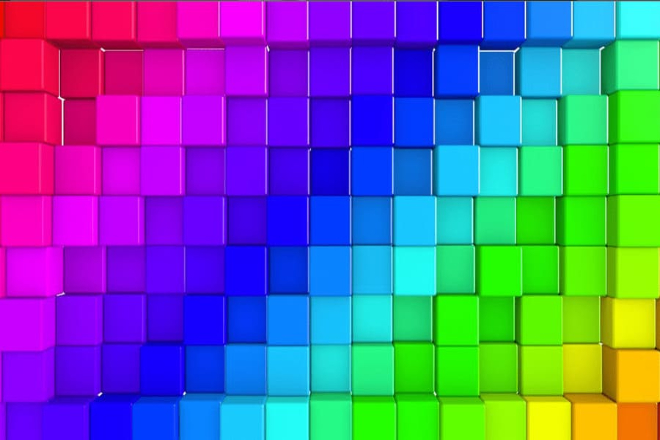
1) أداء الألوان لشاشات العرض الداخلية
تُستخدم شاشات العرض الداخلية في الغالب في البيئات ذات الإضاءة الناعمة نسبيًا، مثلمراكز التسوق المزدحمة, معرض القاعات وقاعات المؤتمرات.
نظرًا لأن الضوء ليس ساطعًا، فلا حاجة إلى أن تكون شاشة العرض ساطعة بشكل خاص، كما أن السطوع المنخفض قد يجعل الألوان تبدو أكثر دقة.
1.1). الألوان الرقيقة:
في حالة السطوع المنخفض، يكون أداء الألوان لشاشات العرض الداخلية جيدًا بشكل خاص، ويمكنه إظهار مستوى ألوان غني جدًا.
على سبيل المثال، عند عرض مستحضرات التجميل في مركز للتسوق، يمكن استعادة لون أحمر الشفاه على الشاشة بدقة، كما أن الانتقال من اللون الوردي الفاتح إلى الأحمر الداكن طبيعي جدًا.
1.2). إعادة إنتاج الألوان العالية:
تعتبر شاشة العرض هذه مناسبة لعرض الأشياء التي تتطلب تفاصيل، مثل الصور الرائعة، أو الأعمال الفنية، أو صور المنتجات عالية الدقة.
على سبيل المثال، عند عرض لوحة في قاعة العرض، يكون اللون على الشاشة مطابقًا تقريبًا للوحة الأصلية، وحتى الظلال والإبرازات في اللوحة يمكن عرضها بشكل جيد.
2) أداء الألوان للشاشات الخارجية
تختلف العروض الخارجية اختلافًا جذريًا، إذ تُستخدم غالبًا في أماكن مثل جوانب الطرق والساحات، حيث تشرق الشمس مباشرةً خلال النهار، ويكون الضوء قويًا للغاية.
لكي يتمكن الأشخاص من رؤية المحتوى بوضوح في هذه البيئة، يجب أن تكون الشاشة شديدة السطوع. عندما سطوع إذا كانت عالية، فسيكون أداء اللون مختلفًا أيضًا.
2.1). تشبع الألوان والتباين العالي:
من أجل جعل المحتوى مرئيًا حتى في الضوء القوي، سيتم ضبط تشبع اللون والتباين في الشاشات الخارجية إلى مستوى مرتفع للغاية.
على سبيل المثال، سيظهر اللون الأزرق على الشاشة أزرقًا بشكل خاص، وسيظهر اللون الأحمر أحمرًا بشكل خاص، وسيكون التباين بين الأبيض والأسود قويًا جدًا.
بهذه الطريقة، يمكن للصورة أن تكون جذابة للغاية، حتى في الشمس.
2.2). قد يتم التضحية ببعض تفاصيل اللون:
على الرغم من أن الألوان تبدو مشرقة، إلا أنه قد يتم "تغطية" بعض مستويات الألوان الدقيقة بسبب السطوع العالي.
على سبيل المثال، عند عرض لوحة مناظر طبيعية، قد تبدو السماء في الصورة زرقاء ساطعة للغاية، بدلاً من اللون الأزرق الطبيعي مع ظلال مختلفة.
ومع ذلك، فإن هذه التضحية تهدف إلى ضمان أن الصورة لا تزال مرئية بوضوح في ضوء قوي ويمكن ملاحظتها في لمحة.
الفرق الرابع: متطلبات الدقة لشاشات العرض LED
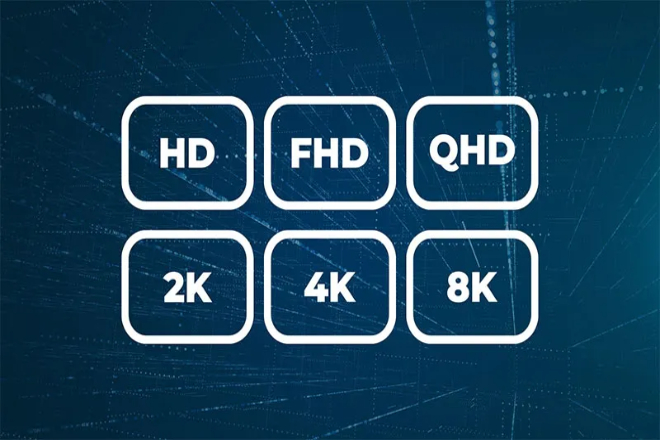
1). دقة متطلبات شاشات العرض الداخلية
تُستخدم شاشات العرض الداخلية في أماكن مثل مراكز التسوق وقاعات المعارض وقاعات المؤتمرات.
يكون الجمهور قريبًا جدًا من الشاشة، والتي قد تكون على بعد مترين أو ثلاثة أمتار أو حتى أقرب.
في هذه الحالة، إذا لم تكن دقة الشاشة عالية بما يكفي، يمكن للجمهور رؤية حبيبات الصورة بسهولة، تمامًا مثل النظر إلى صورة ضبابية.
1.1). كثافة بكسل عالية:
من أجل جعل الصورة تبدو واضحة ودقيقة، تستخدم شاشات العرض الداخلية عادةً شاشات ذات كثافة بكسل أعلى.
على سبيل المثال، شاشات P1.5 أو P2، تحتوي هذه الشاشات على بكسلات كثيفة للغاية، وتبدو الصورة ناعمة للغاية، دون الشعور بـ "الفسيفساء".
1.2). مناسب للمشاهدة عن قرب:
على سبيل المثال، عند عرض صور عالية الدقة للمنتجات الجديدة في مراكز التسوق أو تشغيل عروض PPT في قاعات المؤتمرات، يكون الجمهور قريبًا جدًا من الشاشة.
وتسمح الشاشة عالية الدقة لهم برؤية كل التفاصيل بوضوح، ولن يكون النص مشوشًا.
2) متطلبات دقة شاشات العرض الخارجية
تختلف شاشات العرض الخارجية. فالجمهور بعيد عن الشاشة، وقد تتجاوز المسافة عشرة أمتار، أو عشرات الأمتار، أو حتى أكثر.
في هذه الحالة، لا تحتاج الشاشة إلى دقة عالية جدًا لأن الجمهور لا يستطيع رؤية الفروق الدقيقة على الإطلاق.
2.1). حجم شاشة أكبر:
على الرغم من أن متطلبات الدقة ليست عالية، إلا أن شاشة العرض الخارجية تحتاج إلى حجم شاشة أكبر حتى يتمكن الأشخاص البعيدون أيضًا من رؤية المحتوى بوضوح.
على سبيل المثال، تحتوي شاشة الإعلان على جانب الطريق على شاشة كبيرة، كما أن النصوص والصور الموجودة عليها جذابة للغاية.
2.2). المواصفات الشائعة الاستخدام مثل P5 وP10:
تتميز هذه الشاشات بمساحة بكسل كبيرة نسبيًا. على سبيل المثال، تبلغ مساحة بكسل شاشة P5 5 مم، بينما تبلغ مساحة بكسل شاشة P10 10 مم.
ورغم أن الأمر لا يبدو حساسًا للغاية نظرًا لبعد الجمهور، إلا أنه لا يؤثر على تأثير المشاهدة على الإطلاق.
الفرق الخامس: مستوى الحماية ومتانة شاشات العرض LED
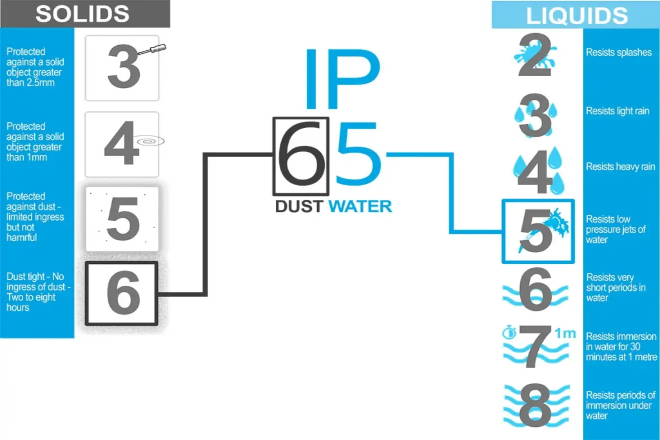
1) متطلبات الحماية لشاشات العرض الداخلية
تُستخدم شاشات العرض الداخلية عمومًا في أماكن مثل مراكز التسوق والمكاتب والفصول الدراسية.
البيئة هادئة نسبيًا وليست معقدة كالبيئة الخارجية. مع ذلك، ورغم أنها جيدة، هناك بعض الأمور التي يجب الانتباه إليها:
- مقاوم للغبار:
سيكون هناك غبار في الداخل، خاصةً في أماكن مثل مراكز التسوق أو قاعات المعارض التي يرتادها الناس. مع مرور الوقت، يتراكم الغبار على الشاشة ويؤثر على جودة الصورة.
- مضاد للكهرباء الساكنة:
تعتبر الكهرباء الساكنة مزعجة أيضًا، وخاصة في المواسم الجافة، حيث يمكن أن تمتص الكهرباء الساكنة الغبار وحتى تتسبب في إتلاف المكونات الإلكترونية للشاشة.
- مستوى الحماية:
بشكل عام، يتراوح مستوى حماية شاشات العرض الداخلية بين IP20 وIP30. هذا المستوى كافٍ لمنع الغبار والكهرباء الساكنة، وهو أمر كافٍ عمليًا.
2) متطلبات الحماية لشاشات العرض الخارجية
شاشات العرض الخارجية مختلفة تمامًا! فهي تتحمل جميع أنواع الظروف الجوية والبيئات القاسية، ويمكن وصفها بأنها "مقاومة للرياح والأمطار".
- ضد للماء:
أكثر ما يُخيف في الخارج هو الأيام الممطرة. إذا لم تكن الشاشة مقاومة للماء، فقد يؤدي المطر الغزير إلى خدشها.
لذلك، يجب أن تكون شاشات العرض الخارجية مقاومة للماء ويمكنها العمل بشكل طبيعي بغض النظر عن هطول الأمطار الخفيفة أو الغزيرة.
- مقاوم للغبار:
يوجد أيضًا الكثير من الغبار في الهواء الطلق، خاصةً في الأماكن ذات الرياح القوية والرمال. قد يسد الغبار فتحات تبديد الحرارة في الشاشة ويؤثر على عمرها الافتراضي.
- حماية من الأشعة فوق البنفسجية:
أشعة الشمس فوق البنفسجية قوية جدًا. التعرض لها لفترات طويلة يُسبب شيخوخة الشاشة، وبهتان لونها، بل وحتى تلف سطحها.
- الحماية من الصواعق:
عادةً ما تكون شاشات العرض الخارجية طويلة وكبيرة، مما يجعلها عرضة للصعق الكهربائي بسهولة في الأيام الممطرة. لذلك، تُعد تدابير الحماية من الصواعق بالغة الأهمية، وإلا فقد تتسبب ضربة صاعقة في "تحطيم" الشاشة.
- مستوى الحماية:
نظرًا لأنها تتعامل مع العديد من الظروف القاسية، فإن مستوى الحماية لشاشات العرض الخارجية يكون عادةً IP65 وما فوق.
ويعني هذا المستوى أن الشاشة ليست مقاومة للماء والغبار فحسب، بل مقاومة أيضًا للأشعة فوق البنفسجية والصواعق، ويمكن القول إنها "مسلحة بالكامل".
الفرق 6: استهلاك الطاقة وتبديد الحرارة لشاشات العرض LED
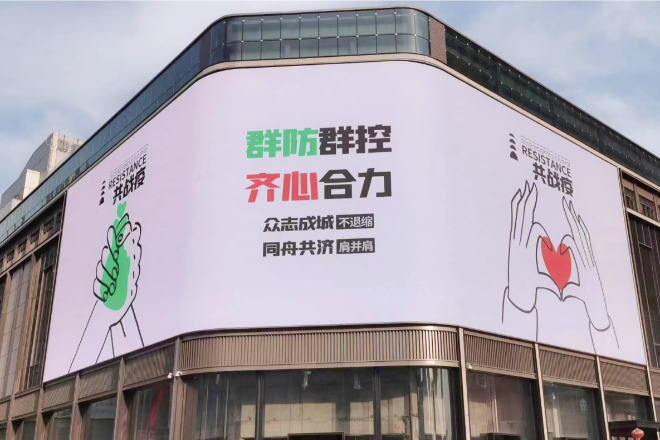
1) استهلاك الطاقة وتبديد الحرارة لشاشات العرض الداخلية
البيئة التي تستخدم فيها شاشات العرض الداخلية مريحة نسبيًا، ولا يلزم أن يكون السطوع مرتفعًا جدًا، وبالتالي فإن استهلاك الطاقة صغير جدًا.
- انخفاض استهلاك الطاقة:
السطوع منخفض، والطاقة صغيرة بشكل طبيعي، واستهلاك الطاقة ليس كثيرًا.
على سبيل المثال، تتمتع شاشة العرض الداخلية P2 بقوة مئات الواط، وهي خالية تمامًا من القلق بشأن استخدام الكهرباء.
- متطلبات تبديد الحرارة المنخفضة:
الطاقة صغيرة، والحرارة المولدة صغيرة أيضًا، ومتطلبات تبديد الحرارة ليست عالية.
عادةً، يُمكن حل هذه المشكلة عن طريق تبديد الحرارة بشكل طبيعي أو تركيب مروحة صغيرة. إنها بسيطة، مريحة، وخالية من الضوضاء.
2) استهلاك الطاقة وتبديد الحرارة لشاشات العرض الخارجية
تختلف شاشات العرض الخارجية. نظرًا لتعرضها لأشعة الشمس، يجب أن تكون سطوعها عاليًا، مما يؤدي إلى استهلاك طاقة مرتفع جدًا.
- استهلاك عالي للطاقة:
السطوع العالي يعني طاقة عالية. على سبيل المثال، قد تبلغ طاقة شاشة العرض الخارجية P5 عدة كيلوواط، مما يستهلك كمية هائلة من الكهرباء.
كلما كانت الشاشة أكبر، كلما زادت قوتها وزاد استهلاكها للكهرباء.
- الحاجة إلى تبديد الحرارة بكفاءة:
الطاقة العالية تُولّد حرارةً أكبر. إذا لم تُبدد الحرارة في الوقت المناسب، تُصبح الشاشة عُرضةً للسخونة أو حتى الاحتراق. لذلك، يجب أن تُزوّد شاشات العرض الخارجية بنظام تبديد حرارة فعّال.
على سبيل المثال، استخدم مروحة كبيرة لنفخ الهواء لتبديد الحرارة، أو استخدم تبريد المياه مثل نظام تبريد المياه في السيارة لتبديد الحرارة لإزالة الحرارة.
على الرغم من تعقيد الأمر، إلا أنه يمكنه ضمان تشغيل الشاشة بشكل مستقر في درجات الحرارة العالية.
7. الخاتمة
من خلال المقارنة أعلاه، يمكننا أن نرى بوضوح أن هناك اختلافات كبيرة بين شاشات العرض LED الداخلية والخارجية من حيث السطوع وزاوية الرؤية وتصميم المحتوى وأداء اللون والدقة ومستوى الحماية واستهلاك الطاقة وتبديد الحرارة.
وتأتي هذه الاختلافات نتيجة لتعديلها بعناية وفقا لبيئة الاستخدام.
أخيرًا، إذا كنت تريد معرفة المزيد عن شاشات LED، يرجى الحصول على اتصال معنا.
